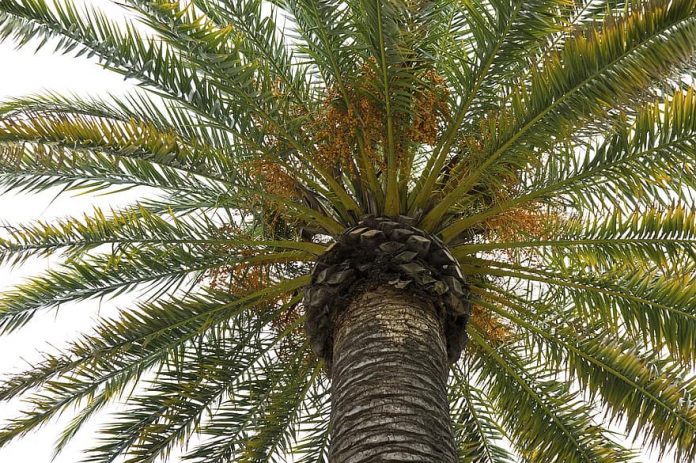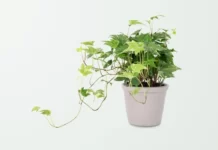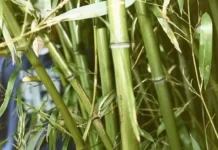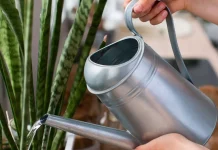Flourishing green palm leaves look great like a paradise in front of the blue sky, and this is an imaginary scene like a dream. Sometimes dream breaks with stained, saggy leaves. This is the exact time when we need to think about how can we revive the palm leaves in a fresh look and color, and how leaves maintain self turgidity.
In the event, the tips of leaves turning brown, don’t pull out the pruners right away. Brown tips and rotted parts on leaves are a clear indication of a damaged and weedy tree that gets an opportunity at bobbing back. You can really do your tree damage by bouncing the firearm and evacuating leaves that aren’t totally dead.
As already discussed, entire brown leaves should be identified and trimmed to keep your Palm tree fresh and feeling sound. At this spot you need a little guidance on your question, “Should I cut off brown palm leaves,” then check out this article.
Brown Tips on Outdoor Palm Leaves
There are numerous reasons why the Palm is turning its appearance with brown tips on leaves. Some of the reasons are as follows:
- Not getting enough amount of water
- Low nutrients like magnesium or nitrogen
- Annoying weevils, spider bugs, aphides or other insects holding of your tree
- Fungal infection such as Ganoderma root decay or
- Temporary yellow tint because of natural ebb and flow of palm leaves
Can Brown Palm Leaves Turn Green Again?
Palm tree fronds that rapidly spins its color from yellow to brown, within almost 3 to 5 days, are normally passing on fronds. Totally brown fronds are dead; they won’t turn green once again. Palm trees shed dead leaves as new leaves develop. Green leaves will stay on most of the shelter all through this characteristic shedding process.
Types of Indoor Palm Trees
Due to their similarity to humid climates, palms draw out the approach of peace and leisure like no other plant can. Most of the Palm trees stay alive in the same condition that we discover to be comfortable: moderate lightning, warm temperatures, or average humid climate. Below are some of the types of indoor palm trees:
– Chinese Fan Palm Tree
This type of palm tree has star-shaped leaves, which make it different from other palms having more classic feathery leaves even though slow-growing Palm and can reach to a mature height of 15 feet or greater.
If you are trying to plan a permanent setting for an indoor subglobose dwarf cultivar is an ideal option.
– Areca Palm
Also recognized as the bamboo palm, the areca palm is well-liked due to its soft leaves and acceptance of low light. The areca palm favors a reasonable quantity of water, even though it does stand infrequent deficiency. You can plant Areca palm in fertile soil and provide it a fertilizer application on a monthly basis for maintaining its flourishing look.
– Majestic Palm
Every type has its own properties and qualities. This type of Palm has two unique positive qualities that make it a perfect indoor plant. It has a tolerance for shade and is slow-growing.
On the other side you can consider drawbacks too like:
- It requires constant moisture and humidity
- Also, it will occupy a large area of an indoor space eventually.
How to Help Palm Trees with Brown Tips on Leaves
So let’s have a look at techniques to help your problematic palm trees individually.
First of all, recollect that yellow leaves now and then show up as a component of a palm’s natural development process. For whatever length of time that yellow leaves are just in the base of the shelter, and the top is quite green, your tree is okay.
If you speculate Mother Nature isn’t grinding away, the next stop is the soil. Soil that is dry to the touch focuses on a dried-out tree, yet over-immersed soil can likewise make leaves change color.
For better treatment, treat your plant carefully and continuously before it gets completely dry. Analyze the water by screening method and by utilizing water strategy.
Keep in mind the soil with low minerals and water levels can be dangerous for plantations; it can harm your plant badly.
A deep soil test is required for the identification of issues that you can do by yourself or by hiring an expert. The outcomes will let you know that what supplements your plant soil is missing so you can discover manure to fill the hole.
What’s more, to wrap things up, a palm tree experiencing nuisances or maladies requires an arborist’s consideration.
This is used as basic sprinkling spray which helps to get rid of bug no doubt it is difficult to use for the treatment of tree
















